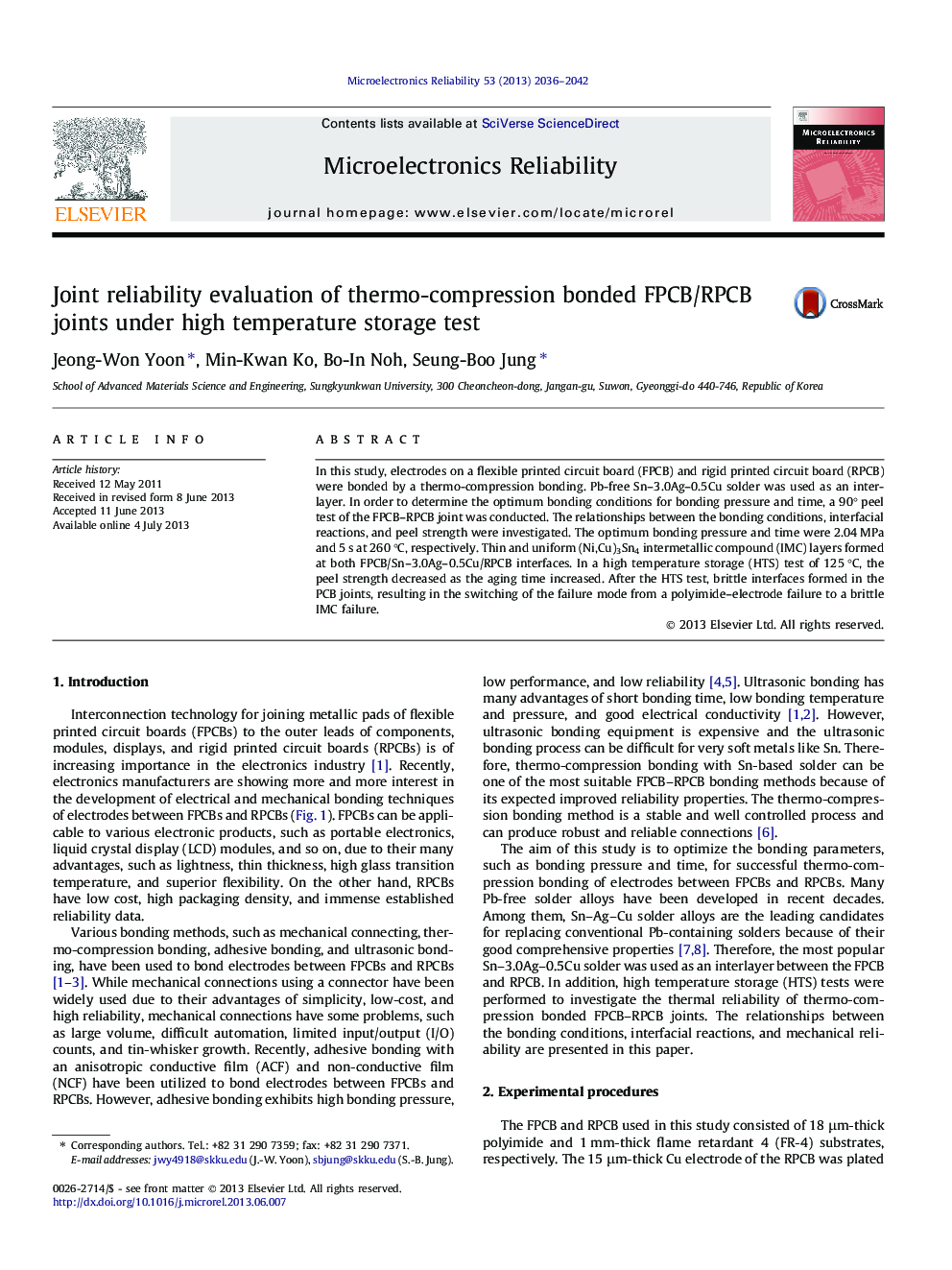| Article ID | Journal | Published Year | Pages | File Type |
|---|---|---|---|---|
| 10364767 | Microelectronics Reliability | 2013 | 7 Pages |
Abstract
In this study, electrodes on a flexible printed circuit board (FPCB) and rigid printed circuit board (RPCB) were bonded by a thermo-compression bonding. Pb-free Sn-3.0Ag-0.5Cu solder was used as an interlayer. In order to determine the optimum bonding conditions for bonding pressure and time, a 90° peel test of the FPCB-RPCB joint was conducted. The relationships between the bonding conditions, interfacial reactions, and peel strength were investigated. The optimum bonding pressure and time were 2.04 MPa and 5 s at 260 °C, respectively. Thin and uniform (Ni,Cu)3Sn4 intermetallic compound (IMC) layers formed at both FPCB/Sn-3.0Ag-0.5Cu/RPCB interfaces. In a high temperature storage (HTS) test of 125 °C, the peel strength decreased as the aging time increased. After the HTS test, brittle interfaces formed in the PCB joints, resulting in the switching of the failure mode from a polyimide-electrode failure to a brittle IMC failure.
Related Topics
Physical Sciences and Engineering
Computer Science
Hardware and Architecture
Authors
Jeong-Won Yoon, Min-Kwan Ko, Bo-In Noh, Seung-Boo Jung,
